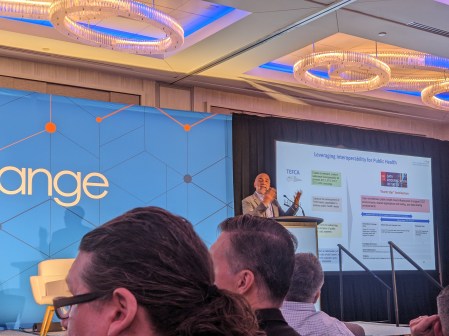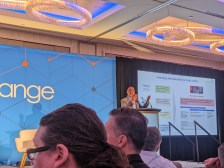Government experts ready to take next steps with open data
The federal government needs to help its agencies and the public use the data it’s opening up.
That was the message of the Armed Forces Communications and Electronics Association’s data symposium Tuesday, where multiple government data experts spoke about how agencies are trying to harness the power behind their open data sets to solve problems.
Karen Lee, branch chief in the Office of Management and Budget’s Office of Federal Financial Management, said the government has made large strides since the 2009 Open Government Directive, which forced agencies to open at least three data sets on Data.gov. Now with over 130,000 data sets available to the public for free, the government needs to find the right ways to effectively use that data.
“We have too much data, to be frank,” Lee said. “Our challenge is how to package data in ways in which federal managers, recipients of awards [and] those who are interested in helping the government manage better and target resources to those who need them can actually make better decisions, synthesize that information and provide better recommendations.”
Lee is among those responsible for integrating the Digital Accountability and Transparency Act — a law that requires agencies to make their financial, budget, payment, grant and contract data publicly available, providing the public with a level of transparency never before seen — into federal agencies. She looks at this as a way for the government to change its thinking when it delivers citizen-facing services.
“It’s back to change management, how we think about changing our work,” she said. “Data is a smarter, faster, more efficient way that we could do our jobs, achieve outcomes, make connections and be more effective.”
Damon Davis, director of the Health Data Initiative for the Department of Health and Human Services, said he’s seen his department and the public find ways to harness HHS data. He highlighted examples like the Centers for Medicare and Medicaid Services’ Hospital Compare, which allows people to gather information on the quality of care at more than 4,000 Medicare-certified hospitals, as well as others that target underserved populations where people have to choose between health care, food and utility bills.
Davis said more projects like this, whether created inside or outside the agency, allow HHS to justify better and more in-depth projects tied to the release of more data.
“That ends up being the fodder for us to go back internally and go ‘This is why [a project] was a good idea,'” he said. “These are reasons we need to continue to open up these data sources.”
Dan Morgan, chief data officer for the Transportation Department, said tapping government data doesn’t mean using the newest technology. He pointed to a phone line in Harlan County, Kentucky, that uses Mine Safety and Health Administration data so miners can check before they go to work if coal mines have been flagged for hazardous conditions. This phone number was set up in part because the county’s residents still mostly depend on landline phone service for communications.
“It doesn’t have to be a fancy app,” Morgan said. “It doesn’t have to be a cool Internet-connected situation. It can be as simple as a phone number to get information in the hands of somebody who is trying to protect their livelihood.”
Lee echoed Morgan’s sentiments, saying technology is just one facet of what makes open data so powerful for the federal government.
“It’s not about technology,” she said. “Data is about using technology to drive human connections that have been siloed because we are so specialized in our areas of focus. The opportunity that we see from a federal governmentwide perspective is how to put this data in a way that is consumable.”





